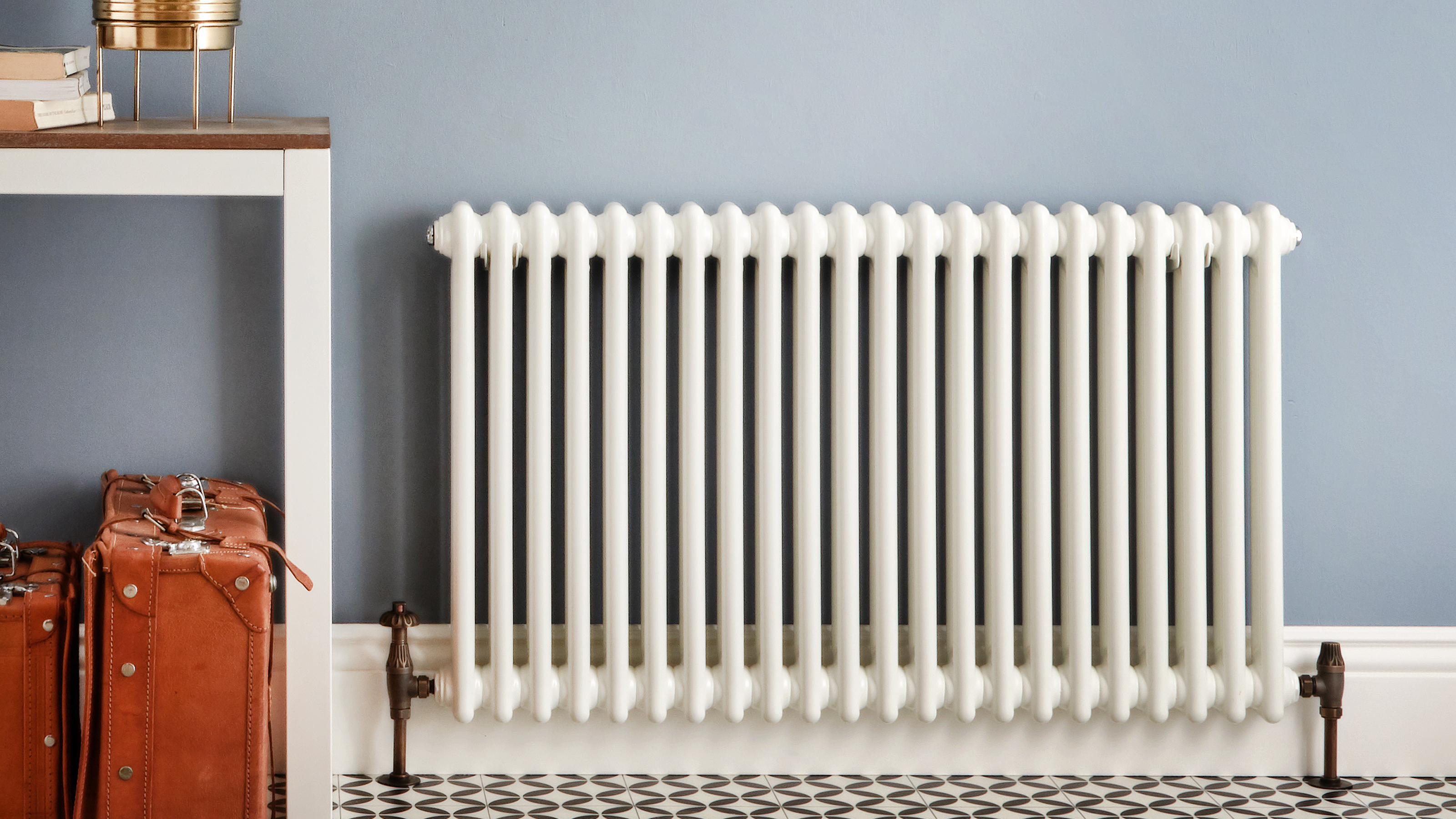How much does it cost to replace a radiator?
Everything a homeowner needs to know about what it costs to replace a radiator and when to do it


If you're wondering about the average cost to replace a radiator then you've probably realized where all those clanking, knocking and hissing noises around the house are coming from... At least you know your house is not haunted, right?
If those eerie sounds keep you up at night, it might be time to figure out how to bleed radiators. But if you've called in an HVAC professional and they've said that your radiators need replacing, here is everything you need to know about costs before going into the project.
A radiator is a heating device that radiates heat throughout the surrounding area. How many radiators a home has depends on the size of the house. Most radiators are cast iron and placed against the outside wall of a room. Some run along the baseboard.
There are three types of radiators: water, steam, and electric. A boiler, most likely placed in the basement or crawl space of an older home, heats water that is then forced through pipes installed throughout the house. In a hot water system, the water travels to the radiator, where its warmth radiates throughout the room, and when cool, travels back to the boiler. The boiler produces steam that travels through the pipes to the radiator in a steam system. As the steam cools, it condenses. The condensate then travels back to the boiler, and the process starts all over again. Electric, baseboard heaters work much like a stove burner. Electricity heats a coil in the unit, and the heat then radiates throughout the room.
What can go wrong with a radiator?
'Not a whole lot,' says Rodney Morris, owner of New Direction Mechanical in Fulks Run, Virginia. But, depending on the age of your home and whether it’s sat empty in freezing temperatures, he says radiators can spring leaks. Otherwise, water and steam radiators can get clogged and stop heating or make extra noise. Valves can break. The most common problem in a radiator is that the valves get clogged, and the system needs to be bled. 'The system can get air in it, and the pump won’t push the water through,' Morris says. Radiator bleeding occurs by opening all the vents to allow any trapped air to escape.
Factors that impact the radiator repair costs
Several factors can impact the cost of a radiator repair.
The complexity of the system–If your home is three stories with a radiator in every room, the repair cost will be more than if you had a small, one-story home with just a couple of radiators.
Get small space home decor ideas, celeb inspiration, DIY tips and more, straight to your inbox!
Parts cost–If your system needs a couple of valves or a vent replaced, the cost will be much less than replacing a radiator. An entire radiator replacement can cost from $100 to $2000 depending on the size and type of radiator, according to the home services website Fixr.
Type of problem–From an air bubble in the system to a cracked radiator, the type of problem will dictate the cost of the parts and the hours of labor.
The extent of damage–If the problem with your radiator or other system components is a leak, you could have damage to the wall behind the radiator, the flooring, and more. The extent of this damage and the labor to fix it will add to the overall cost of the repair. To save the expense and inconvenience of removing the radiator later, always make these kinds of repairs simultaneously.
Labor cost–Most professionals will charge a service fee to cover the travel and first hour of service and then a lower hourly rate on top of that. For example, according to Fixr, 'The average timeframe to replace a plumbed radiator is 3 to 4 hours, at roughly $200 an hour.'
Repair vs replacement
Old cast iron radiators were built to last a lifetime, and most do. 'It’s not normal to replace a radiator,' says Morris. And, since they’re expensive, it pays to have a professional diagnose the problem. They’ll first inspect the boiler, which is often the culprit. 'We want to know if the water is getting up to temperature,' he says. 'Then, we’ll test the pump. If all is good there, we’ll go from heater to heater to see where the air is. Normally, it’s at the uppermost part of the system because the air likes to travel upward.' They’ll also check for radiator, pipe, and valve leaks.
Average cost of radiator replacement
Depending on the geographical location, labor costs can add $85-200 per hour to this job. The cost of a radiator depends on its type, material, and size. For example, steam, cast iron radiators are more expensive than electric radiators. And of course, larger units cost more than smaller ones.
The national average cost for a radiator installation is $1,500, with a minimum of $500 and a maximum of $8600, according to Fixr. A hot water radiator costs from $100 to $1,000. An electric radiator runs from $200 to $1,500. And, a steam radiator costs from $300 to $2500.
Most radiators are made of cast iron or stainless steel. Stainless is the more expensive option, according to Fixr.
Both physical size and heat output determine the size of a radiator. British Thermal Units (BTUs) denote a water or steam radiator’s heat measurement, and the heat of an electric unit is measured in watts. Generally, you’ll have a radiator in each room of the house, sized according to the cubic feet of the space.
Maintaining your radiator system
Prevention is the key to saving on radiator replacement. Performing three simple maintenance tasks will prevent something significant and costly down the road. These tasks include:
Inspecting pipes–From the water lines around the boiler to those that insert into the radiators, regularly check the pipes for anything out of the ordinary. Even a tiny leak can cause costly damage.
Clean vents– Cleaning radiators is a must. You’ll find a valve with a small air hole on the outside of a steam radiator. Ensure the hole is clean of dust or debris and not blocked by furniture.
Bleed the system–Your hot water system needs annual bleeding of the air in the pipes. With proper instruction, you can do this yourself. Or schedule an appointment with a professional.
If your home sounds as though Casper the Friendly Ghost is throwing a jolly party, you want to have an HVAC professional check your system. Hopefully, you won’t need to replace the radiator. And if you do, you have the information necessary to shop around for the best cost for your area.
Carol J. Alexander writes website copy, blog posts, and feature articles on home remodeling and construction topics from her home in the Shenandoah Valley of Virginia. In addition to Real Homes, notable clients include, This Old House, Family Handyman, and Florida Roofing magazine.
